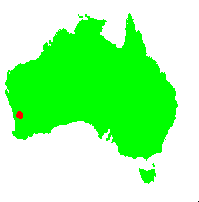General Description:
Grevillea thyrsoides is a low growing shrub, usually no more than about 50 cm in height and spreading to 1 – 2 metres. There are two recognised subspecies; subsp.thyrsoides and subsp.pustulata. The latter differs from subsp.thyrsoides in having slightly shorter flower clusters and in having shorter and more closely spaced leaflets.
The leaves are fern-like, greyish green, hairy and usually 4-10 cm in length. Flowers are in “toothbrush” shaped clusters (racemes), deep pink in colour and are also very hairy. The racemes are borne on long stalks which extend beyond the foliage.
G.thyrsoides is a very spectacular and ornamental species which has received limited cultivation. It is best suited to areas having a dry summer and is difficult to establish in humid summer areas although grafted plants are successful in such areas. The species requires well drained soils and a sunny position. It is tolerant of at least moderate frost.
Propagation is usually from cuttings as seed is rarely available and may germinate spasmodically. Some experiments have been carried out on grafting G.thyrsoides to hardy root stocks to extend the range of areas where the plant can be cultivated. Successful stocks include G.robusta and G.”Poorinda Royal Mantle”.
* EPBC Act = Environment Protection and Biodiversity Conservation Act 1999;
ROTAP = Rare or Threatened Australian Plants (Briggs and Leigh, 1988)
For further information refer the Australian Plants at Risk page

Grevillea thyrsoides
Photo: Brian Walters
 Australian Native Plants Society (Australia)
Australian Native Plants Society (Australia)